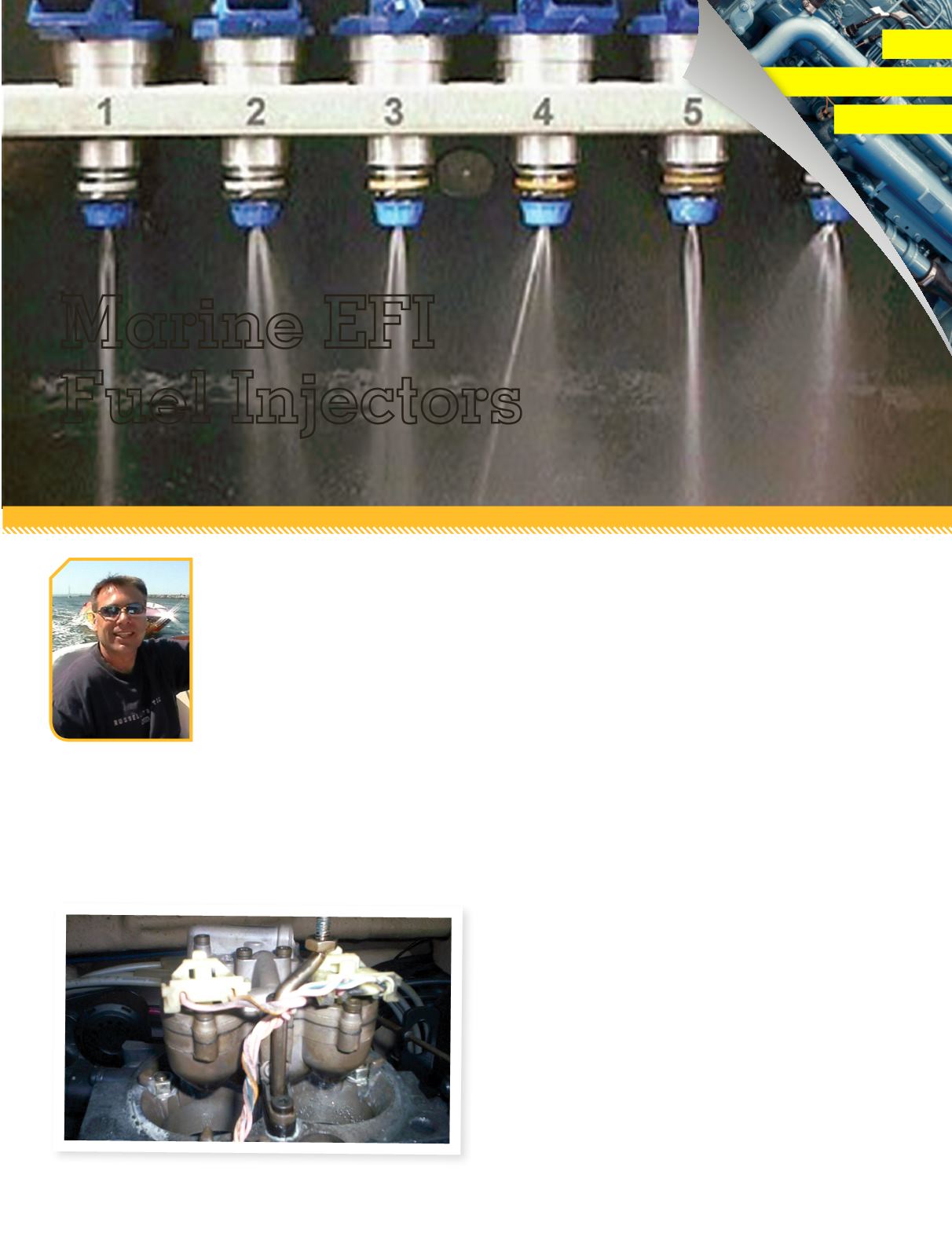
SPRING 2015 | MARINE TECHNICIANTODAY
19
Marine EFI
Fuel Injectors
N
o one ever said that solving really
tough fuel injection problems was
going to be easy, nor is it easy to
keep up with all the new technology coming
out right now. Volvo Penta offers direct
injection for 2015 on the new 4.3 L GM Gen V
foundation aluminum blocks, and MerCruiser
is now building their own 4.5L V-6 engine.
The old standby marine engines are gone or
going away very soon. General Motor’s 4.3L
engine is already gone, next on the list to get
the axe are the GM 5.0L and 5.7L engines. Soon to replace those aging V-8’s,
Volvo Penta will be offering a 5.3L GM based direct fuel injection engine,
and MerCruiser will have a V-8 engine, all assembled in house at the factory
in Fond-du-Lac, WI. To add to that, Ford has thrown its hat back into the
marine market and is offering a marine application of its 6.2L Raptor engine
marinized by Indmar along with collaboration with Roush Racing. This new
technology is significantly more advanced than the traditional EFI marine
engines currently offered and may prove to be quite challenging to repair,
especially for the marine technician who is not up-to-date with current EFI
and catalyst systems.
With that said, this article will focus on how the EFI systems fuel injector
works. Since EFI engines have been out for many years now, it appears
that the actual fuel injector is starting to become a more common fault of a
poorly running engine. They fail electrically, mechanically, or become partly
or fully restricted. Currently there are two basic styles of injectors used in EFI
engines, one style for TBI (Throttle Body Injection) and MPI (Multiport Fuel
Injection) systems.
The TBI system uses a throttle body assembly as a base (looks similar to a
carburetor) for the mounting of 2 or 4 injectors mounted above the throttle
body’s venturi. Besides the injectors, the throttle body contains the throttle
plate, fuel pressure regulator, IAC valve (Idle Air Control) and the TPS (throttle
position sensor). The TBI injector is a solenoid operated valve that is turned
on and off by the ECM. The injectors operate off of 12 VDC, usually supplied
by an ignition / fuel relay. Drivers in the ECM supply the ground to the
negative terminal of the injector to actuate the solenoid valve inside.
Energizing the injector’s solenoid opens a ball valve allowing pressurized
fuel to flow through a flow director plate containing 6 machined holes. This
creates a conical pattern of finely atomized fuel that is sprayed into the TBI’s
venturi. TBI systems fire one injector on one Ref Hi signal and the second
injector on the next Ref Hi signal.The injectors only fire one time per complete
firing cycle of the engine. The injector supplies fuel for several cylinders each
time it is fired. The intake manifold is wet with fuel, just like the manifold
of a carbureted engine. The amount of fuel injected is determined by the
length of time that the injector is energized, this is called Pulse Width. The
ECM calibration is based on the fact that an injector discharges a known
amount of fuel per millisecond at a specific pressure. Maintaining proper
fuel pressure and flow is essential to providing the correct air to fuel ratio
for all running parameters. NOTE: never apply battery voltage to the injector
terminals for testing as the internal solenoid may become damaged in a
matter of seconds.
THE
PERFORMANCE
CORNER
By John Mosetti
u
TBI throttle body injection poor spray patterns


